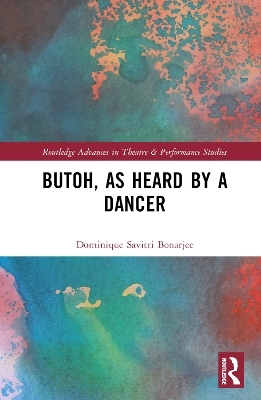
Butoh, as Heard by a Dancer
Seiten
2023
Routledge (Verlag)
978-0-367-63119-2 (ISBN)
Routledge (Verlag)
978-0-367-63119-2 (ISBN)
This book explores the origins of Butoh in postwar Japan through orality and transmission, in conjunction with an embodied research approach.
This book explores the origins of Butoh in post-war Japan through orality and transmission, in conjunction with an embodied research approach.
The book is a gathering of seminal artistic voices – Yoshito Ohno, Natsu Nakajima, Yukio Waguri, Moe Yamamoto, Masaki Iwana, Ko Murobushi, Yukio Suzuki, Takao Kawaguchi, Yuko Kaseki, and the philosopher, Kuniichi Uno. These conversations happened during an extended research trip I made to Japan to understand the context and circumstances that engendered Butoh. Alongside these exchanges are my reflections on Butoh’s complex history. These are primarily informed by my pedagogical and performance encounters with the artists I met during this time, rather than a theoretical analysis. Through the words of these dancers, I investigate Butoh’s tendency to evade categorization. Butoh’s artistic legacy of bodily rebellion, plurality of authorship, and fluidity of form seems prescient and feels more relevant in contemporary times than ever before.
This book is intended as a practitioner's guide for dancers, artists, students, and scholars with an interest in non-Western dance and dance history, postmodern performance, and Japanese arts and culture.
This book explores the origins of Butoh in post-war Japan through orality and transmission, in conjunction with an embodied research approach.
The book is a gathering of seminal artistic voices – Yoshito Ohno, Natsu Nakajima, Yukio Waguri, Moe Yamamoto, Masaki Iwana, Ko Murobushi, Yukio Suzuki, Takao Kawaguchi, Yuko Kaseki, and the philosopher, Kuniichi Uno. These conversations happened during an extended research trip I made to Japan to understand the context and circumstances that engendered Butoh. Alongside these exchanges are my reflections on Butoh’s complex history. These are primarily informed by my pedagogical and performance encounters with the artists I met during this time, rather than a theoretical analysis. Through the words of these dancers, I investigate Butoh’s tendency to evade categorization. Butoh’s artistic legacy of bodily rebellion, plurality of authorship, and fluidity of form seems prescient and feels more relevant in contemporary times than ever before.
This book is intended as a practitioner's guide for dancers, artists, students, and scholars with an interest in non-Western dance and dance history, postmodern performance, and Japanese arts and culture.
Dominique Savitri Bonarjee is a dancer and an artist, currently completing her doctoral research in the Department of Art, Goldsmiths University of London, UK.
List of figures
Preface
Introduction: Dust is Time’s Body
Chapter 1. EMERGENCE: The First Collaborators
Chapter 2. STRUCTURE: The Students
Chapter 3. DISPERSION: The Mavericks
Chapter 4. COMPLEXITY: A Contemporary Generation
Chapter 5. EXHAUSTION: The Future of Butoh
Index
| Erscheinungsdatum | 02.11.2023 |
|---|---|
| Reihe/Serie | Routledge Advances in Theatre & Performance Studies |
| Zusatzinfo | 27 Halftones, black and white; 27 Illustrations, black and white |
| Verlagsort | London |
| Sprache | englisch |
| Maße | 156 x 234 mm |
| Gewicht | 453 g |
| Themenwelt | Kunst / Musik / Theater ► Theater / Ballett |
| Sachbuch/Ratgeber ► Sport ► Tanzen / Tanzsport | |
| Sozialwissenschaften ► Soziologie ► Spezielle Soziologien | |
| ISBN-10 | 0-367-63119-9 / 0367631199 |
| ISBN-13 | 978-0-367-63119-2 / 9780367631192 |
| Zustand | Neuware |
| Informationen gemäß Produktsicherheitsverordnung (GPSR) | |
| Haben Sie eine Frage zum Produkt? |
Mehr entdecken
aus dem Bereich
aus dem Bereich


